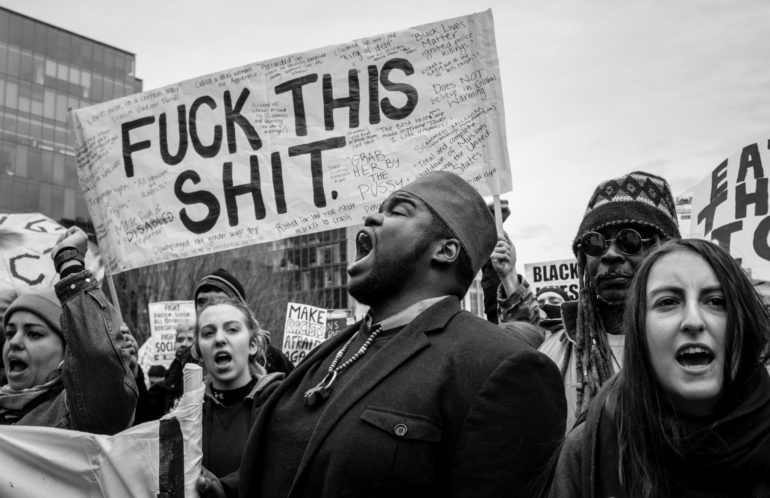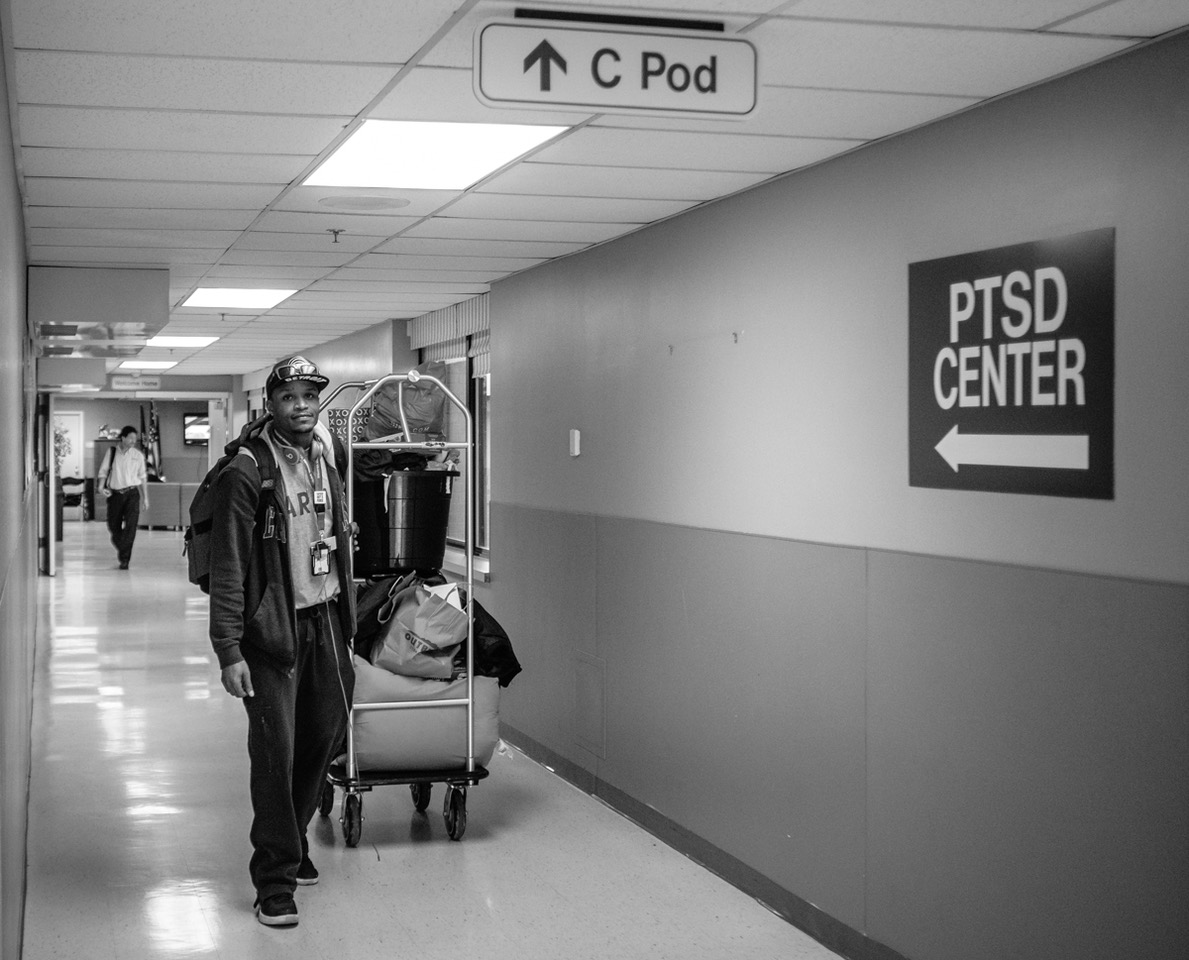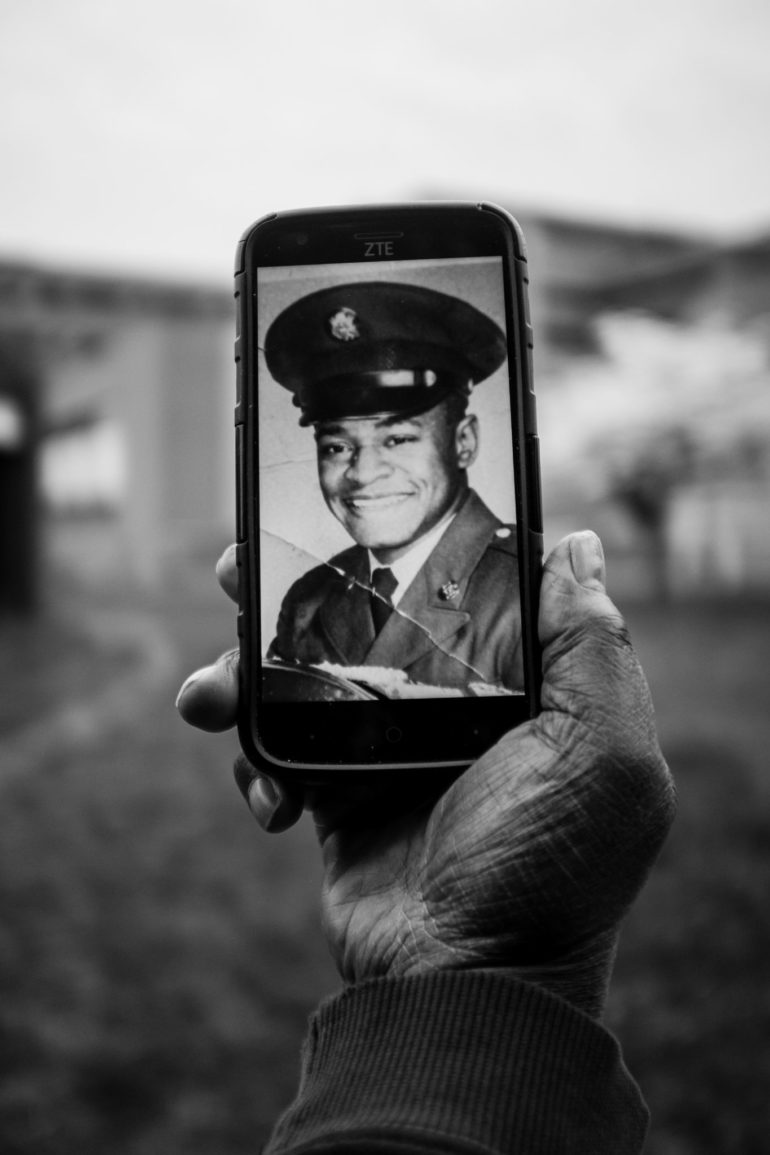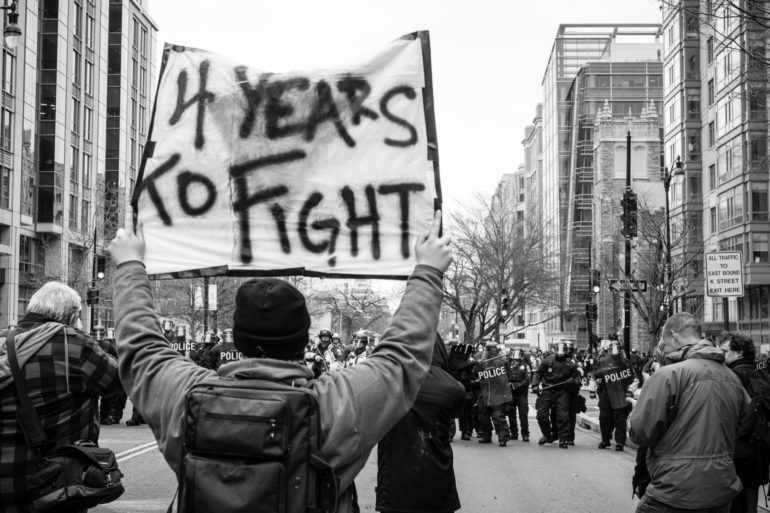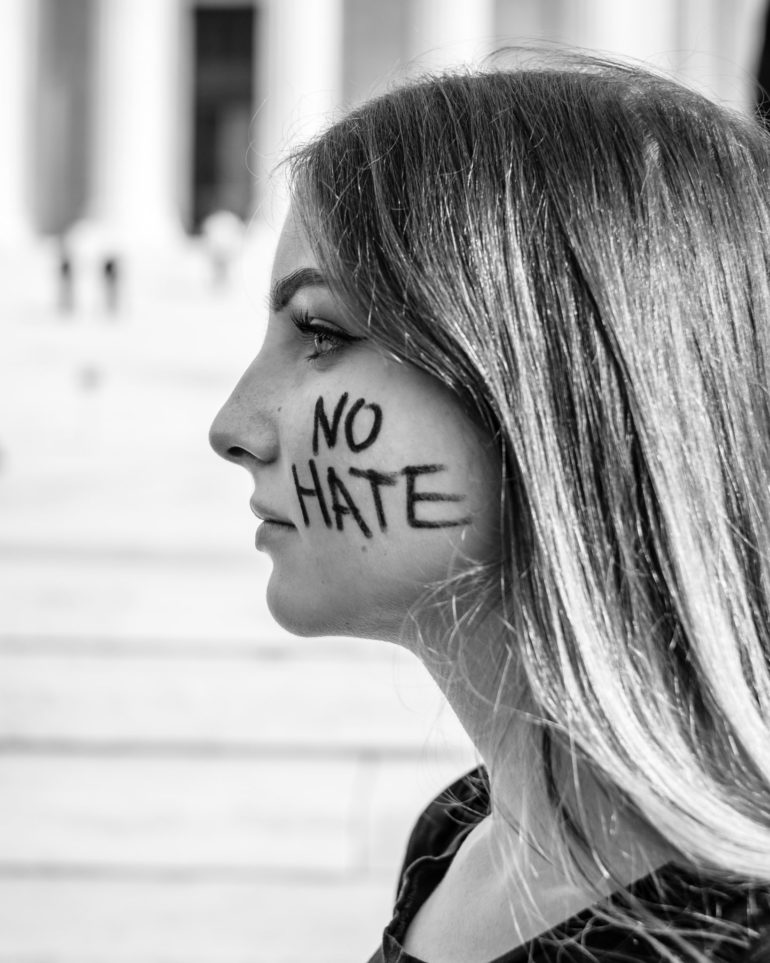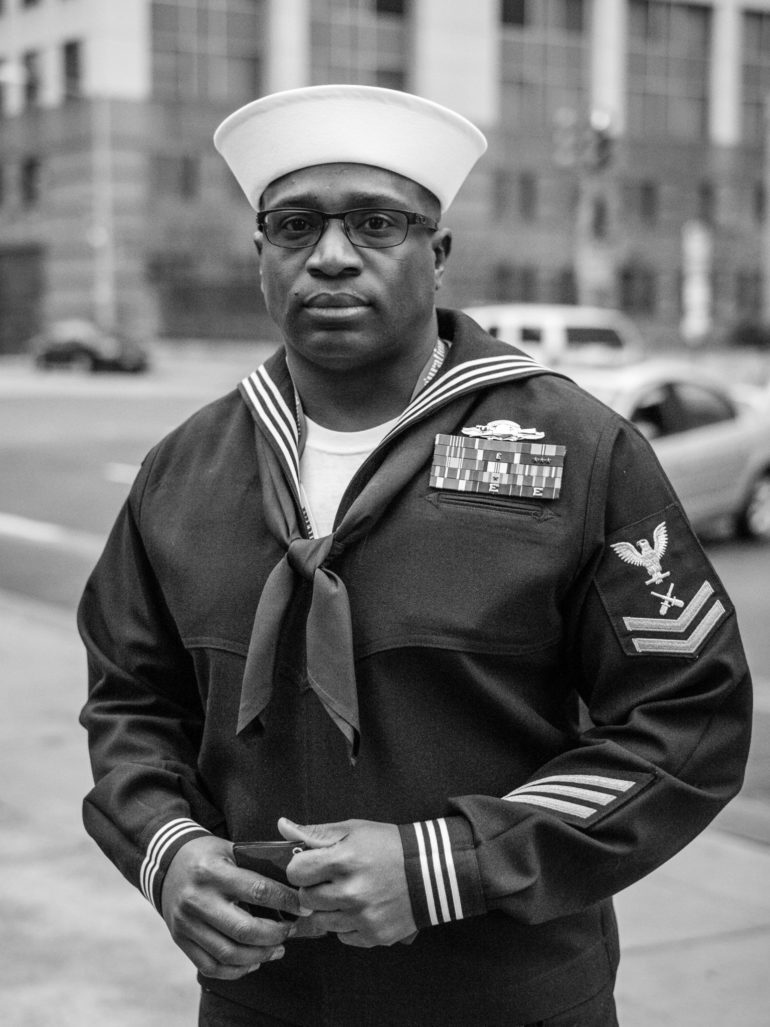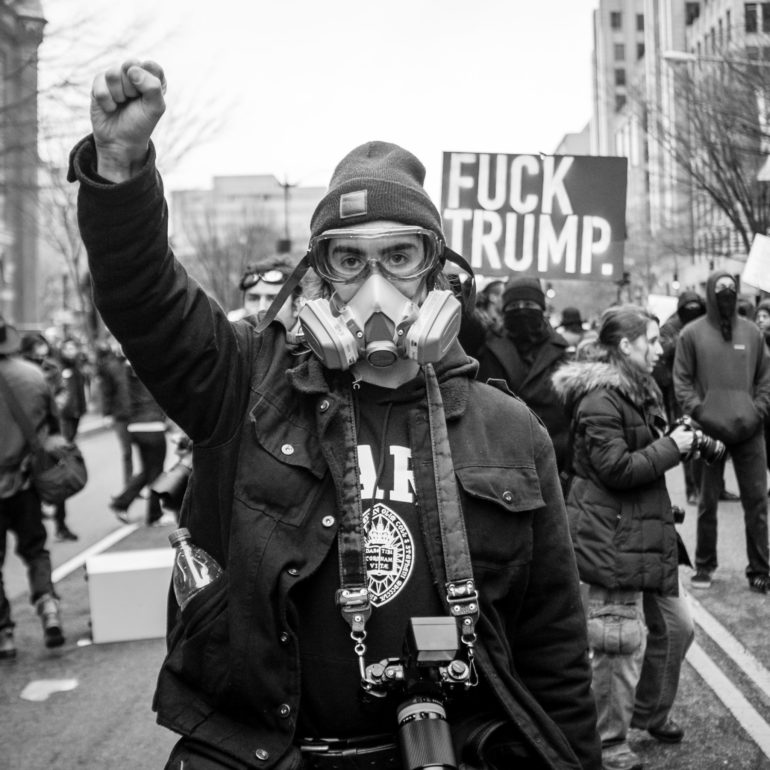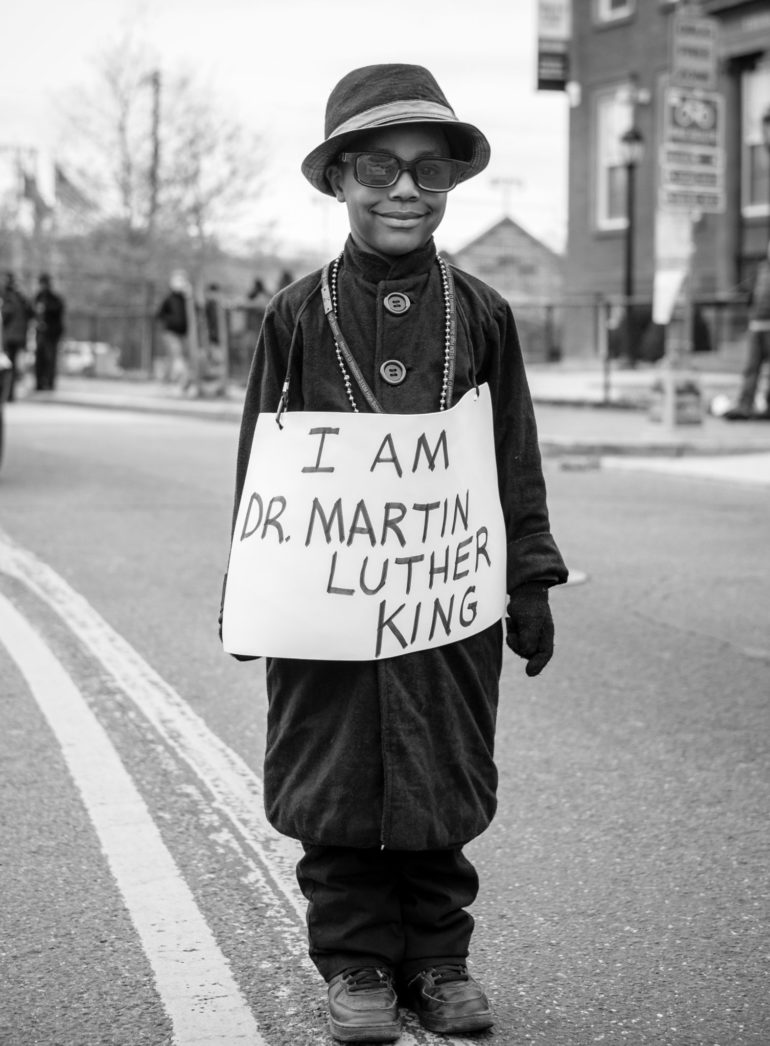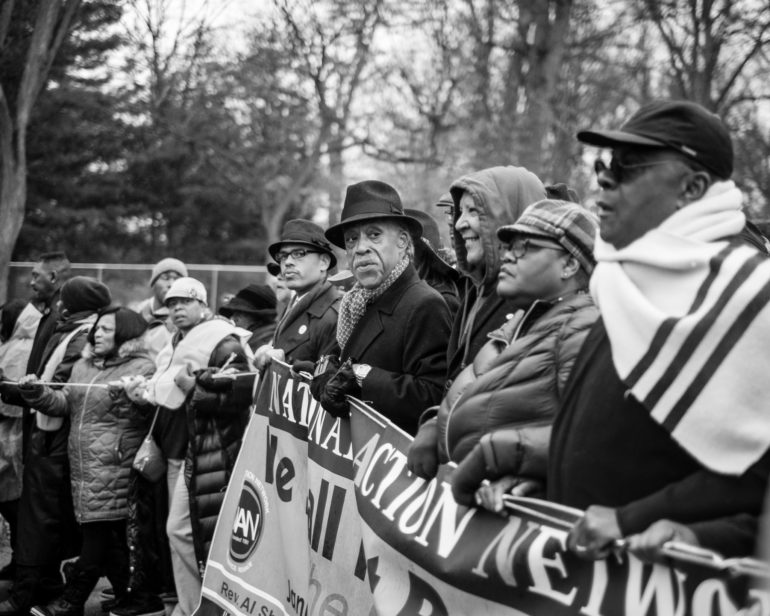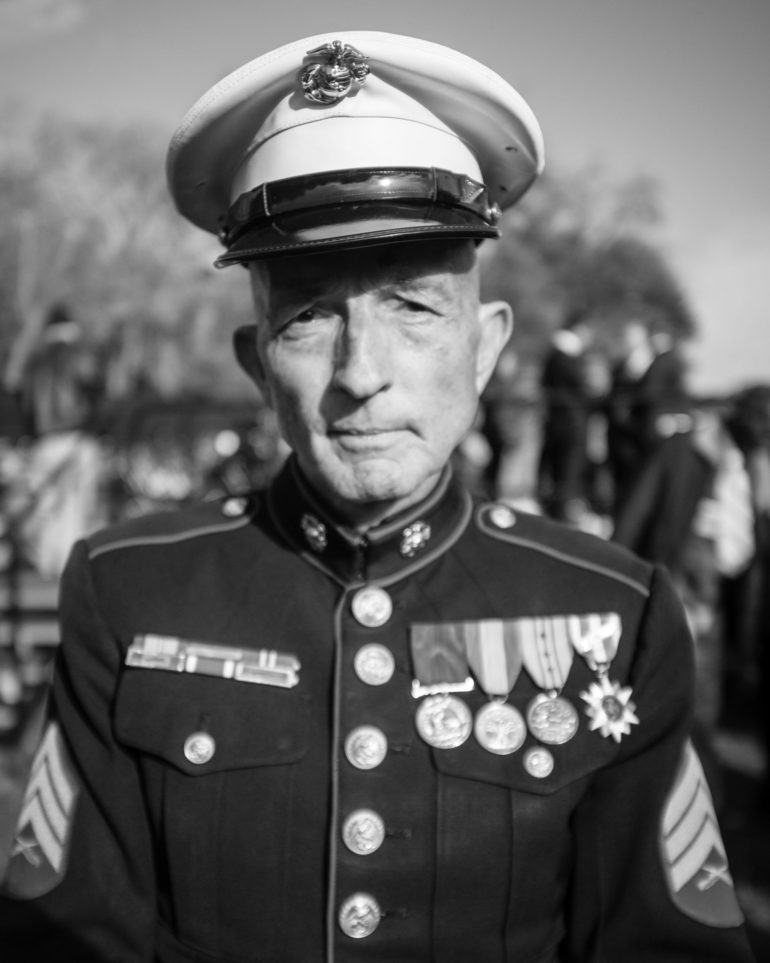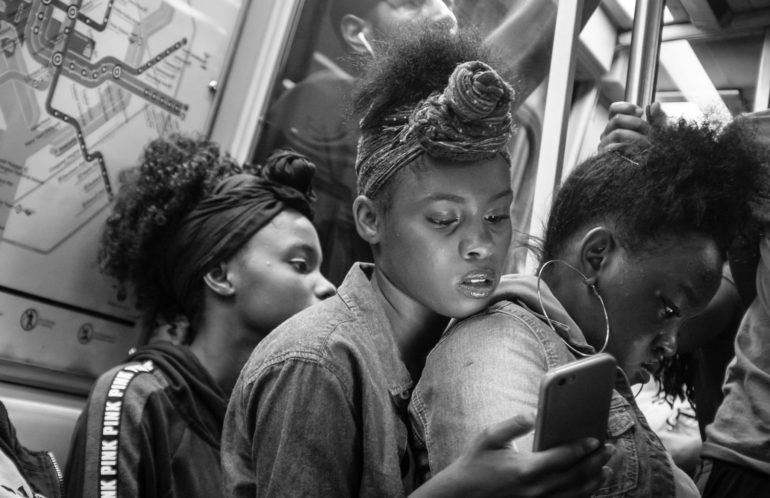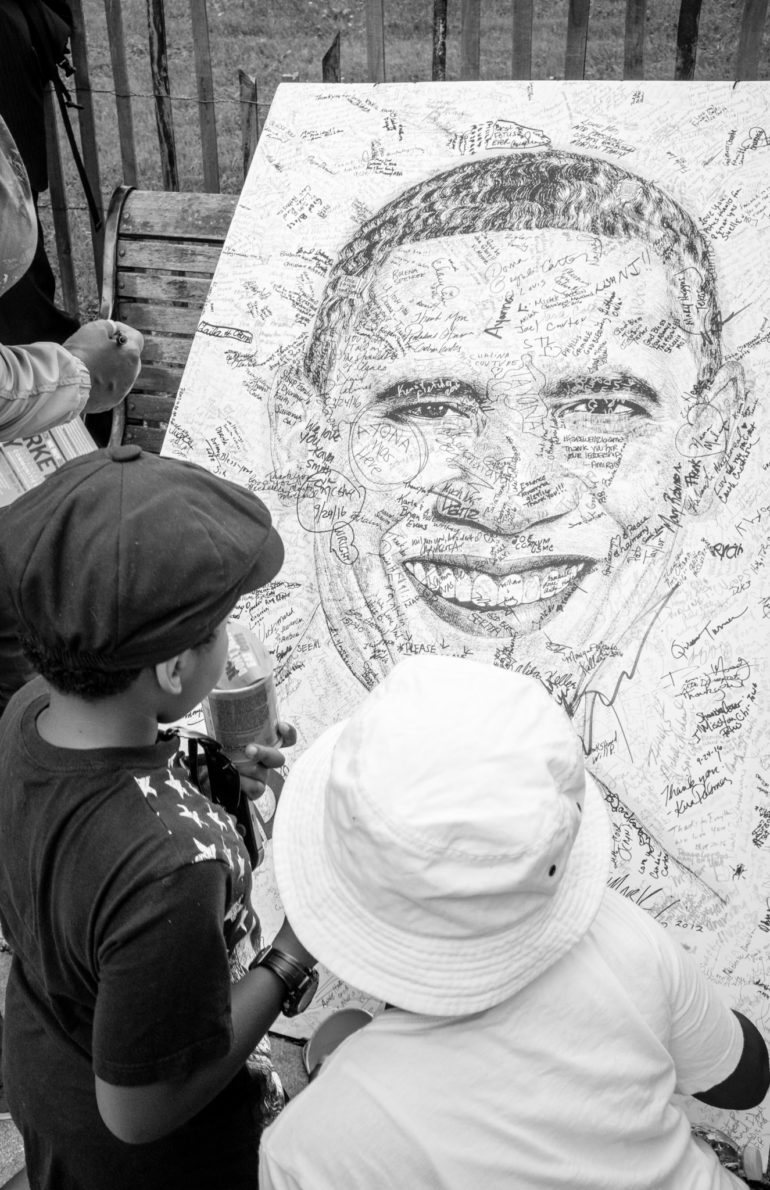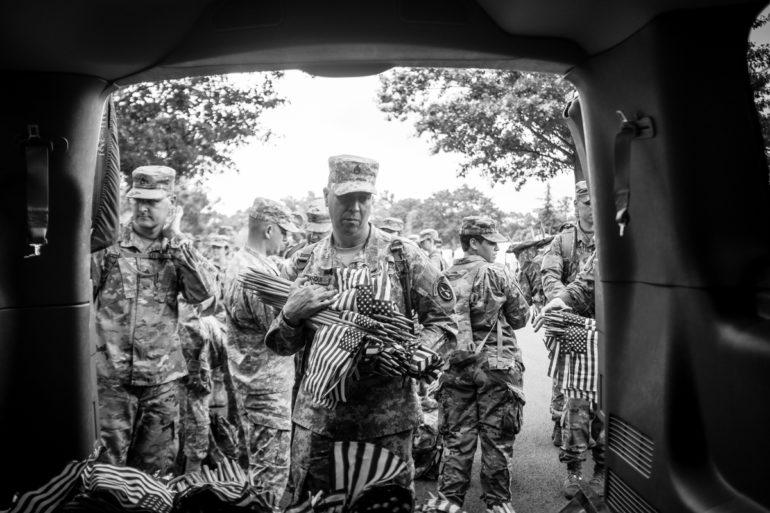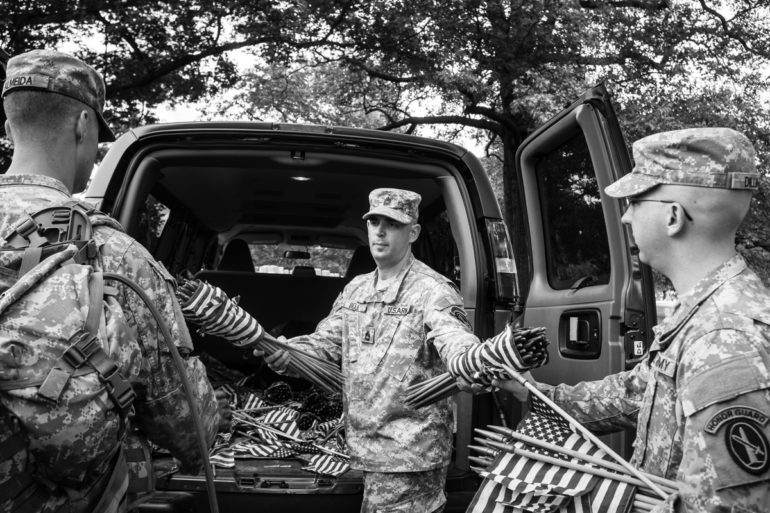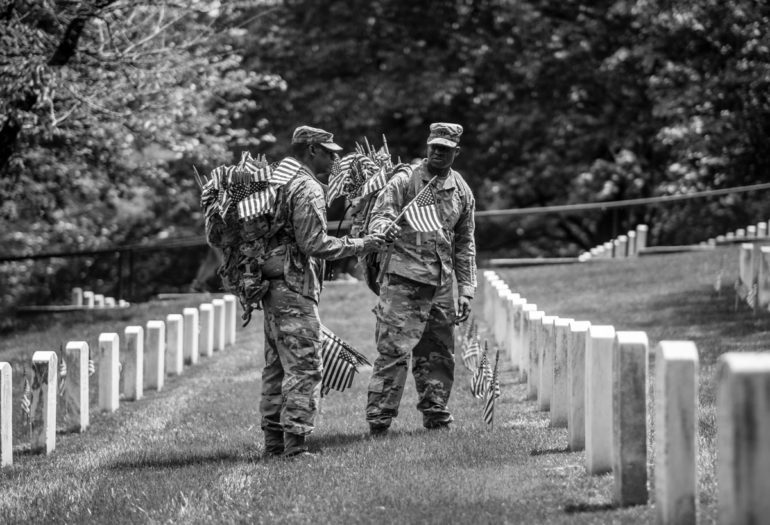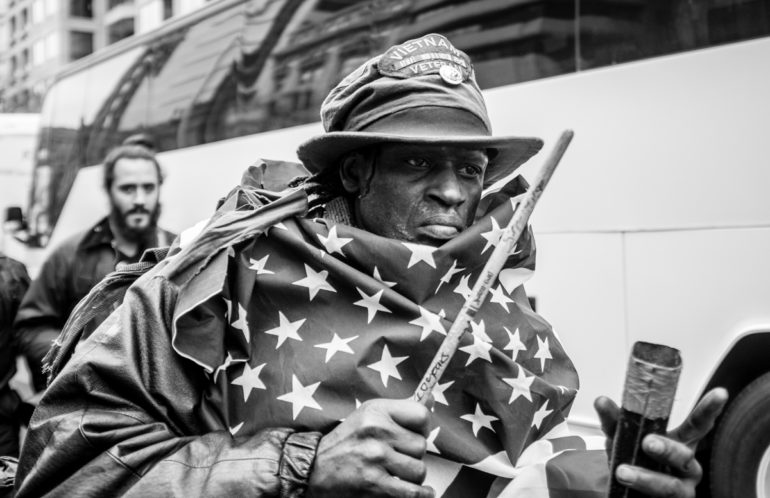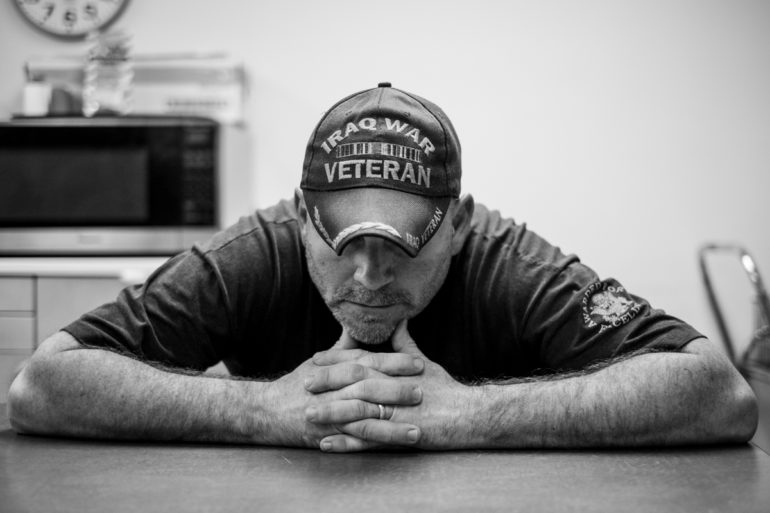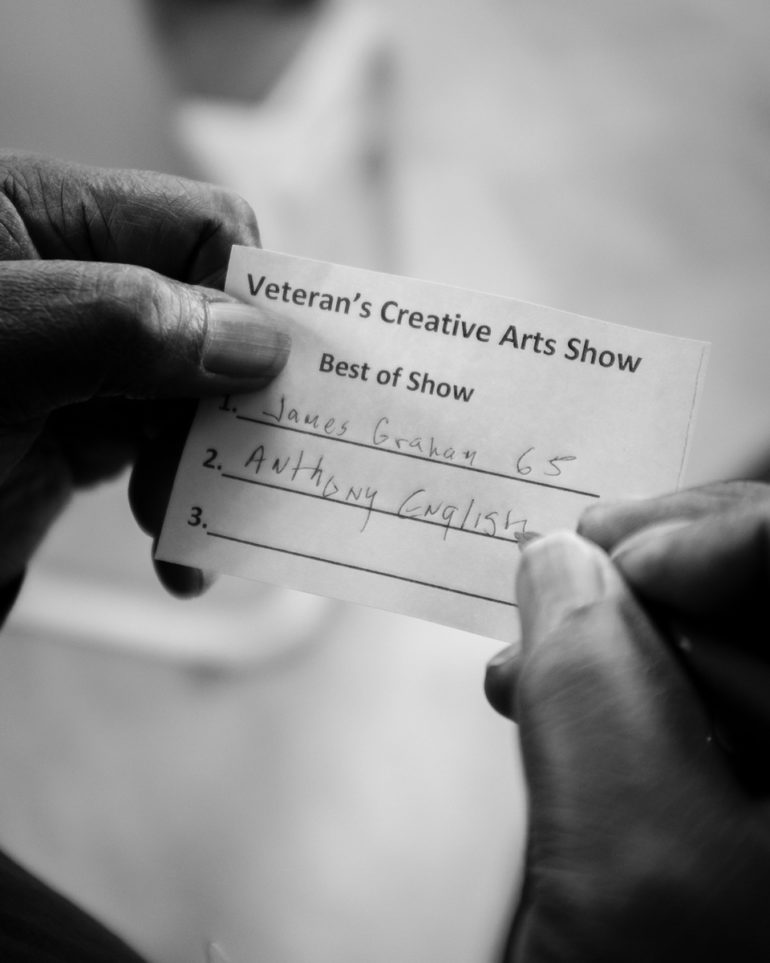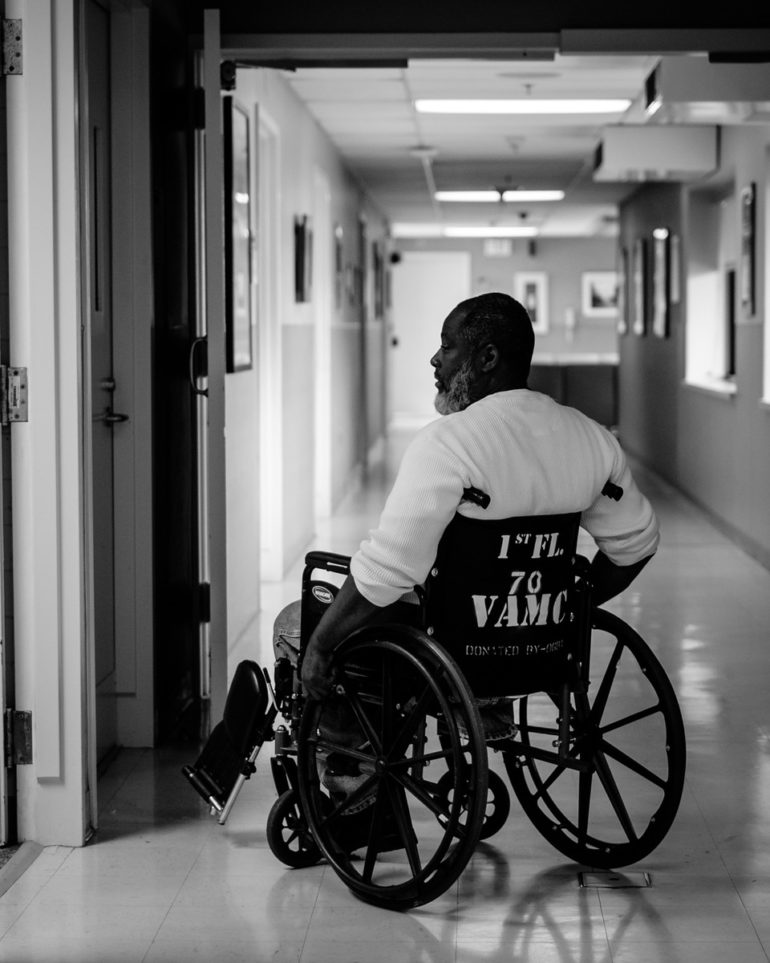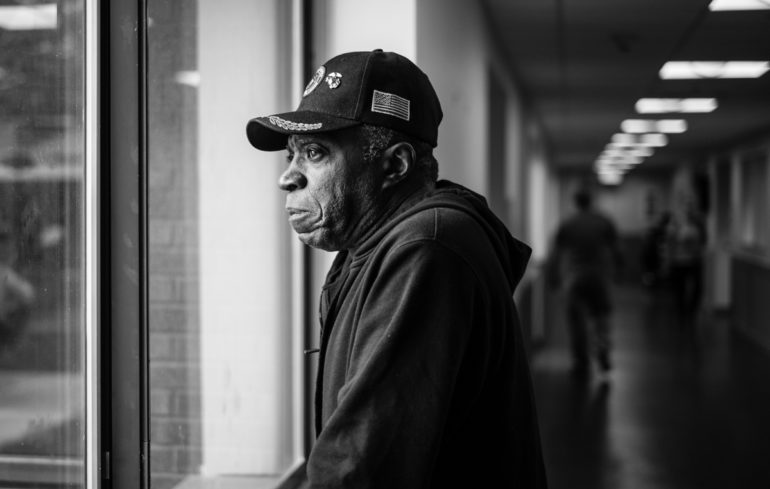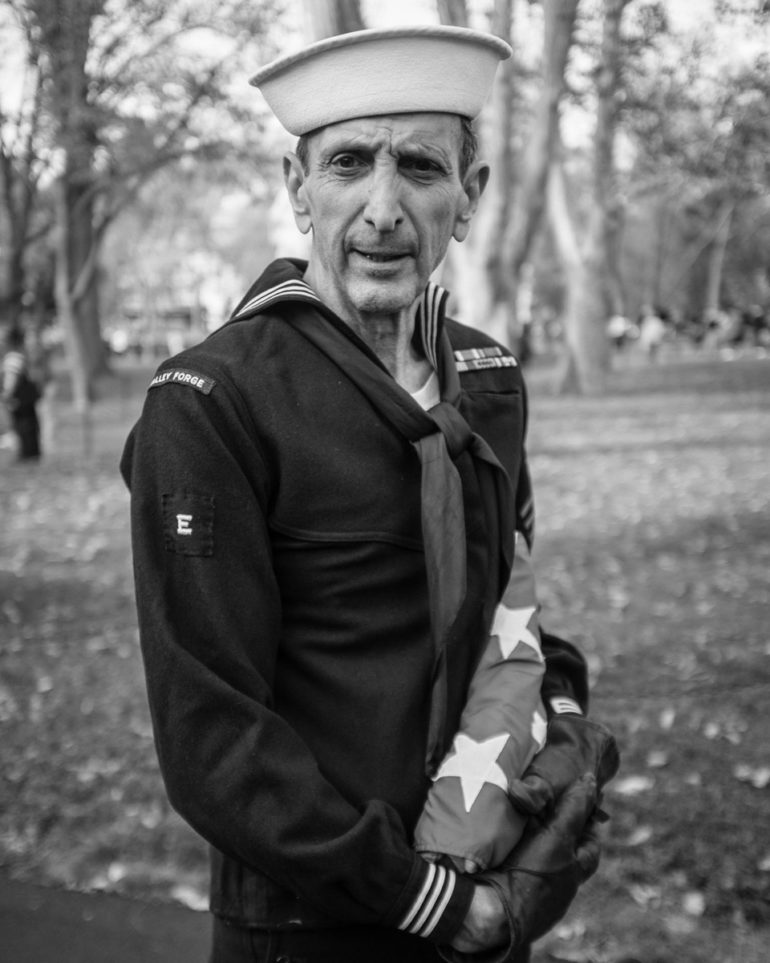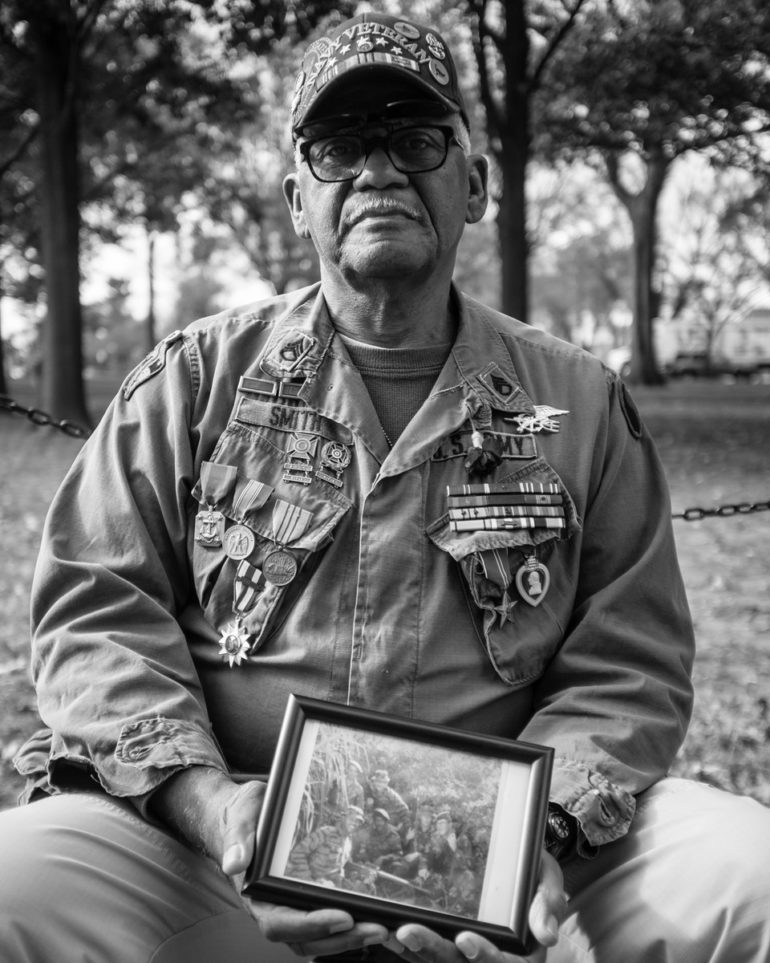All images by Michael A. McCoy. Used with permission.
Photographer Michael A. McCoy states that he captures “life, love and the varied nuances that make up the human race.” To many of us, that will seem very interesting. While Mike has always loved photography, it was the death of a close family member that pushed him to take his passion for photography more seriously. But Mike has a deeper intent and he’s a disabled US Veteran after serving two tours in Iraq. Photography, for him has become a therapeutic tool. He states that is has helped him navigate life by capturing the joy in another’s life.
“Society has painted a picture that PTSD isn’t real, and that it doesn’t have a face,” he says. “These are wounds that aren’t really visible. I want to bring awareness to the public. Just because someone looks good on the outside doesn’t mean they’re not hurting on the inside.”
According to Mike’s artist statement:
Joy isn’t the only emotion that he captures. Growing up just ten blocks from where the Freddie Gray incident occurred, McCoy captured the raw, powerful emotions of protestors of the Black Lives Matter Movement. Using his photojournalistic skills he caught the pain and heartbreak that spanned across different generations while simultaneously immortalizing the hope for the future generations that may live in a world where their skin color and culture does not limit the possibilities of their future.
Why did you get into photography?
As a young kid, I can remember playing with my dad’s old film camera like it was yesterday. I would load the film into the camera and begin clicking away. At the time, I did not have a clue on what I was doing, but it felt really good. As I got older, I began to understand the importance of how much power can be produced through a single image. Plus photography serves as an outlet for me to escape the memories and trauma and experienced while serving multiple tours in Iraq.
What photographers are your biggest influences?
Gordon Parks, Roy DeCarava, Jamel Shabazz Ruddy Roye just to name a few.
How long have you been shooting?
Since childhood, but it wasn’t until 2013 when I started photographing in my church’s photography ministry. At that moment I began to truly understand the importance of photography and the effect that an image can have on a person’s life.
Why is photography and shooting so important to you?
Many photographers of different skill sets have influenced me. I have always had a great appreciation for the works of and major influence in my style of photography.
Do you feel that you’re more of a creator or a documenter? Why?
I consider myself to be a documentarian; it is my duty to use my photography as a tool to document life and social issues and to bring awareness and accountability to society. While documenting the Black Lives Matter Movement, my photographs served as a tool hold our lawmakers and police officers accountable for their actions. Also, I used my camera to help bring awareness to inform people that all police officers and citizens are not bad people.
My photography is a tool that I utilize to escape the memories experienced while serving in Iraq. My camera has become my outlet to allow my feelings from my wartime experiences, to be conveyed through the subjects I photograph.
What’s typically going through your mind when you create images?
Whenever I place my eye into the viewfinder and my index finger onto the shutter; it allows me to escape the unwanted memories and trauma experienced during my two deployments to Iraq. My camera provides me a sense of relief and safety.
Tell us about your processes both mentally and mechanically?
Before I go out to photograph I have what I call my pregame routine. My pregame routine consists of me doing a final inspection of my equipment such as, ensuring that my batteries are charged, memory cards are good to go, etc. and then I begin to listen to a playlist of songs that I created on my iPhone which helps me prepare my mentally. My mechanical process is basic and has been effective to me thus far. Once I begin photographing, I tend to just follow my instincts and go with the flow.
Want to walk us through your processing techniques?
My processing technique is pretty simple. Whenever I am capturing an image, I pay very close attention to my camera settings. I am very mindful of my shutter speed, aperture, and ISO, the goal is to get everything right in camera. By doing this it reduces the amount of time spent doing post processing which ultimately makes more time for me to continue photographing. Also, I have a series of custom presets that I use to make minor enhancements to my image.
Tell us about the project that you’re pitching, or your portfolio.
I am currently working on a project to bring awareness to veterans living with PTSD. My goal is to show viewers that PTSD does have a certain look. The wounds of PTSD are invisible to the human eye and at the end of the day the one thing that we’re looking for more than anything is love.
When I approach veterans there’s an instant connection made. It is based on our main similarity, which is we are all brother and sister in arms. The connection is made upon a unique bond, that we all share the same experiences of serving our country. I know personally living with PTSD is extremely difficult. I realized that I could use my gift of photography as an outlet for myself to escape trauma experienced while deployed to Iraq and it also allows the me to connect with other veteran who shares similar experiences. As a combat veteran it is extremely hard to talk about past experiences with individuals who have not experienced combat.
The project has been ongoing for about six months. I would like to exhibit my photographs thought out the country and hopefully across the world. Ultimately, I would like for this project to encourage veterans to use photography as a outlet to express themselves.
I typically photograph anywhere that I have my camera. So far, I’ve had the opportunity to photograph hero’s in West Virginia, Maryland, Washington D.C., Philadelphia, and New York City. I would be honored to photograph veterans across the country if the I am afforded the opportunity and resources. In the future, I hope that this project can be used to educate people about PTSD.
What made you want to get into your genre?
I felt like I didn’t choose Documentary Photography it chose me. I love documentary photography because it gives me a different perspective and a greater appreciation of life. It also allows my camera to become my spokesman and voice. Plus the camera is a tool that will allow you access to things that you normally would not experience.
Tell us a bit about the gear that you use and how you feel it helps you achieve your creative vision.
Fuji X100T, which has a 23mm f2.0 (equiv. to 35mm) lens. I also use the Fuji X-T10 with the 23mm f/1.4 (equiv. to 35mm), 35mm f/1.4 (equiv. to 50mm), and I occasionally use my 56mm f1.2 (equiv. to 85mm).
What motivates you to shoot?
My motivation to photograph is simple. It’s a four-letter word “Life”. Since spending two years of my life in Iraq, I told myself that I would never miss the opportunity to document life again. Also, since being recognized twice by Time Magazine this year, I made a promise to my fellow veterans, and myself that I will use my photography as a tool to bring more awareness to PTSD and mental illness.
I hope this project can be a source of inspiration to all and bring more awareness to mental illness. Living with PTSD does not have a specific look. The wounds are invisible and at the end of the day the one thing that we’re looking for more than anything is love.
